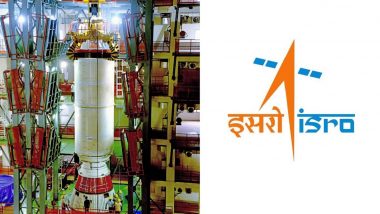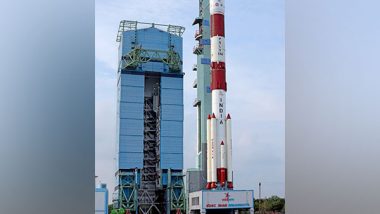Sriharikota, March 29: Soon after the successful launch of Indian Space Research Organisation (ISRO)'s GSLV-F08 carrying the GSAT-6A communication satellite on Thursday, ISRO Chief Dr K Sivan said that the Indian space agency plans 10 more missions in the coming 9 Months. “In next nine months, we are going to have 10 missions. We will have the launch of high-bandwidth satellites for communication purposes”, Dr Sivan said.
“Lot of work is in front of you (scientists). Definitely you will be doing it. I do not have any doubt on that… the missions we are planning this year, all 10 missions are very high profile missions,” Sivan added. He said ISRO would also launch a couple of remote sensing satellites including IRNSS-1I over the next few weeks.
While addressing the scientists at the Mission Control Centre after the successful launch of the communication satellite GSAT-6A onboard Geosynchronous rocket GSLV-F08 from the spaceport, Sivan said. “We are going to have one demonstration of human space programme technology development also (this year)".
So far, ISRO has been successful in launching 237 Foreign Satellites of 28 countries, 96 Spacecraft Missions, including 3 nanosatellites and 1 micro satellite, 66 Launch Missions including Scramjet-TD & RLV-TD, 9 student satellites and 2 re-entry missions.
On Thursday, India’s latest communication satellite GSAT-6A was launched onboard Geosynchronous rocket GSLV-F08 from the spaceport at Sriharikota in Andhra Pradesh. In yet another ISRO’s achievement, the satellite was then successfully placed in the designated orbit. The Geosynchronous Satellite Launch Vehicle (GSLV-F08), fitted with indigenously developed cryogenic third stage, injected the satellite into orbit about 18 minutes after its lift off from the Satish Dhawan Space Centre at Sriharikota.
It must be noted that the 2,066 kg GSAT-6A satellite, built by space agency ISRO, which cost around Rs. 270 crore. The satellite will be able to send and receive signals from hand-held devices. The interesting fact about the launch is that along with the cryogenic engine, the GSLV this time has a second engine: Vikas, which works on liquid propellants.
Today’s launch marks the 12th flight of Geosynchronous Satellite Launch Vehicle GSLV-F08 and sixth flight with indigenous Cryogenic upper stage. ISRO in its statement said that the GSAT-6A satellite would provide a thrust to mobile communication through multi-beam coverage facility.
The space agency said that GSAT-6A which is similar to GSAT-6 has a high power S-band communication satellite built on I-2K satellite bus with a mission life of about ten years.
(The above story first appeared on LatestLY on Mar 29, 2018 06:21 PM IST. For more news and updates on politics, world, sports, entertainment and lifestyle, log on to our website latestly.com).













 Quickly
Quickly




















